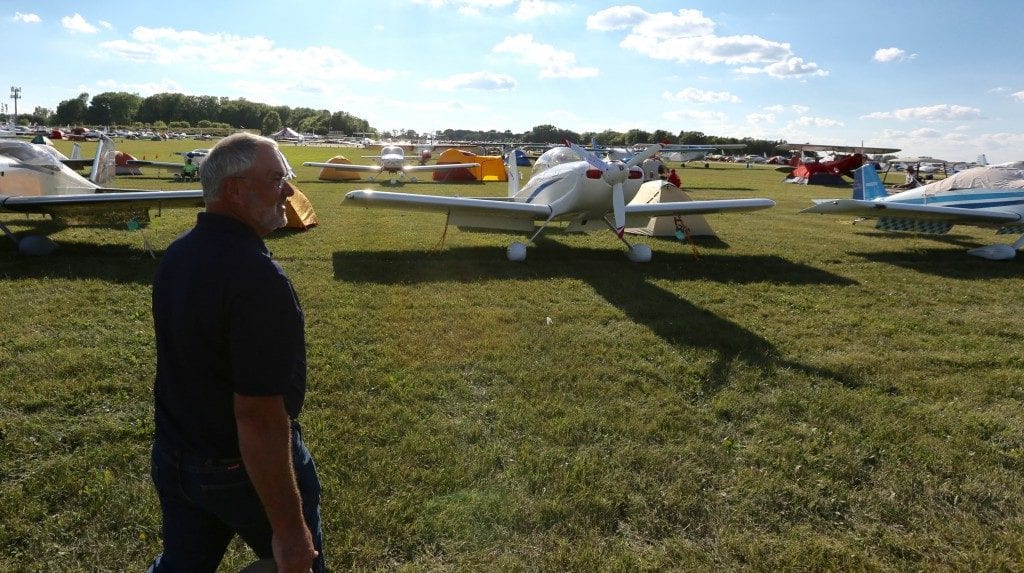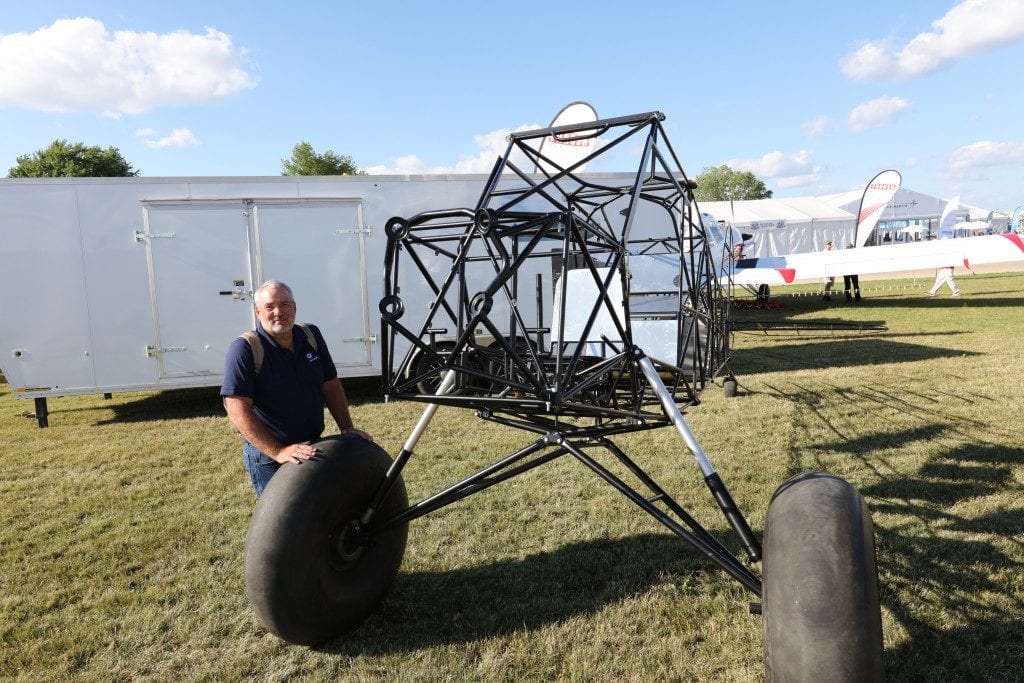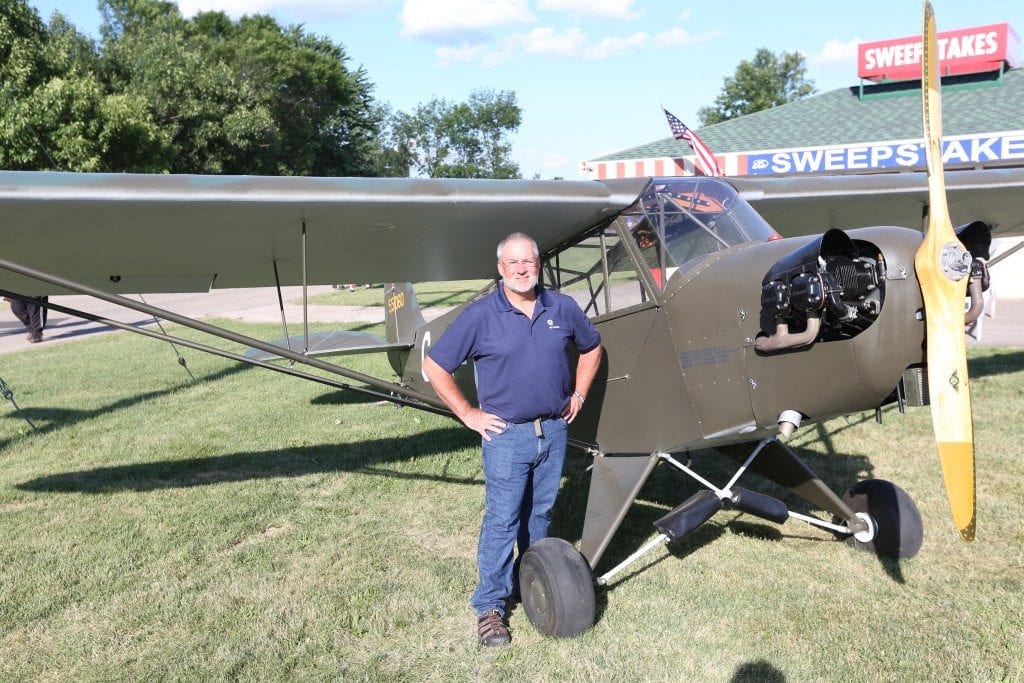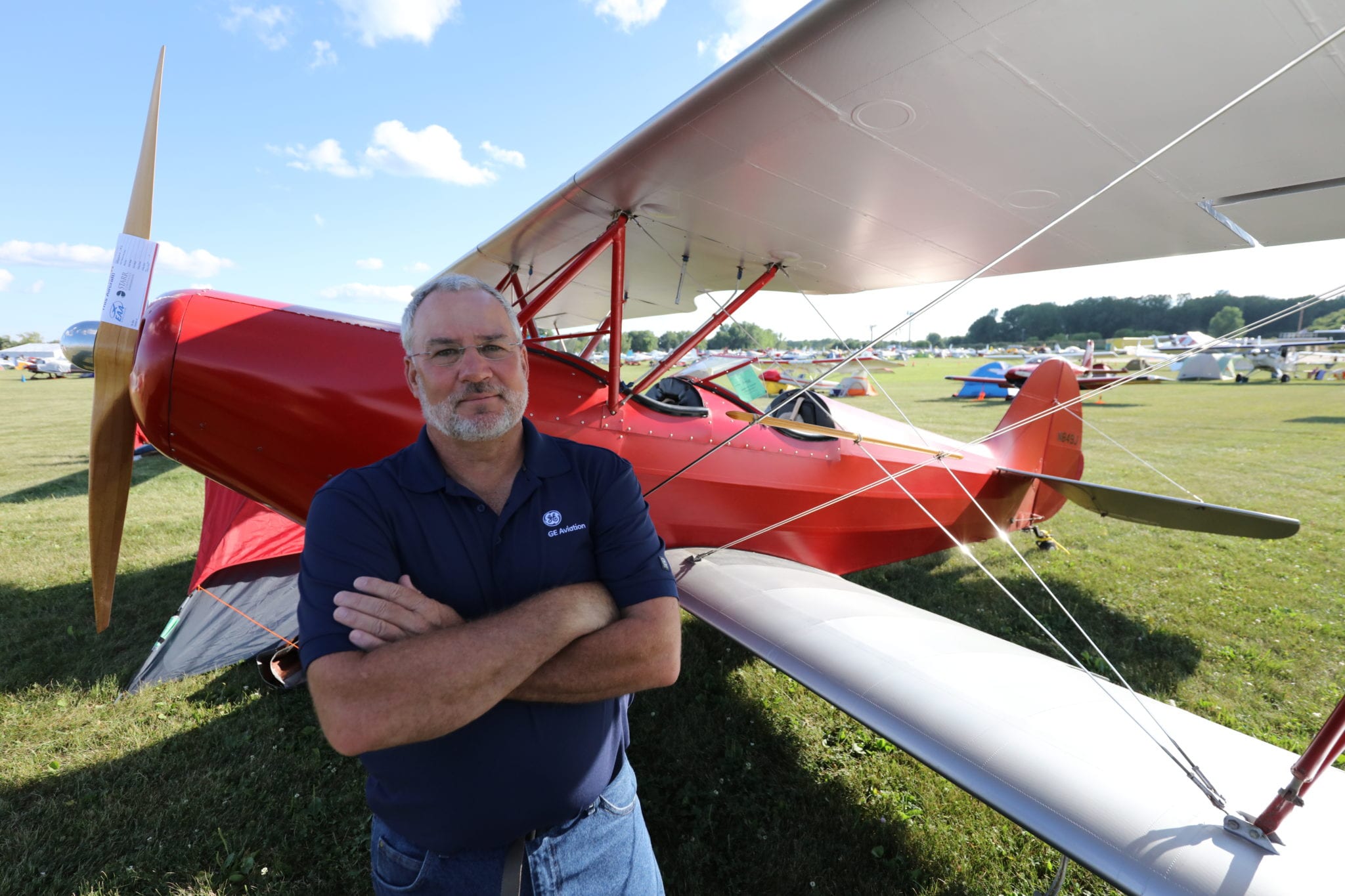The sky was totally his: Jeff Beam flew his red biplane 800 miles to be at the Oshkosh fly-in
July 28, 2016
On a typical day, aviation engineer Jeff Beam builds and fixes engines for commuter and private jets at GE Aviation’s plant in Strother Field in Kansas. But last week, the 30-year GE veteran climbed into his red, open-cockpit biplane and took off for Oshkosh, Wisconsin, some 800 miles away. Along the way, he made three refueling stops and spent a couple of days hanging out with other pilots who fly vintage planes and camping under the two-seater’s wings at the EAA AirVentures fly-in, the world’s largest gathering on aviation enthusiast. He stopped by for a chat on Monday, after the day’s afternoon airshow had ended.
 Like thousands of other pilots, Jeff Beam is camping next to his plane.
Like thousands of other pilots, Jeff Beam is camping next to his plane.
GE Reports: Tell us about your plane.
Jeff Beam: It’s an experimental Hatz biplane. I bought it a few years ago from another owner. It’s blast to fly. You can feel the wind in your face.
GER: What do mean by experimental?
JB: It means that a person built the plane, not a company. Many people who come to Oshkosh fly planes they built themselves. The label “experimental” means that the FAA [Federal Aviation Administration] issues you a special airworthiness certificate.
GER: Have you built a plane yourself?
JB: No, but I’ve started on one. I am building a Piper Cub plane in my garage. It will be highly modified for short takeoff and landing. I’m about halfway through.
 Above: Jeff Beam is building a Piper Cub in his garage similar to this one. Top: Beam next to his red Hatz biplane. He flew it 800 miles from Kansas to Oshkosh.
Above: Jeff Beam is building a Piper Cub in his garage similar to this one. Top: Beam next to his red Hatz biplane. He flew it 800 miles from Kansas to Oshkosh.
GER: You have to trust your handiwork.
JB: Sure, you have a lot at stake. You have to make sure that you do a good job. I’m going to a plane-building workshop while I’m here. The nice thing about building experimental is that if you see an idea that you like, you just copy it, test it and then put it out there. Plane builders are an open-source community.
GER: Are you attending any other workshops?
JB: Yes, I went to one on building your own airstrip. But I only have 10 acres outside of my house and I need at least 40.
GER: Do you have any other planes?
JB: Yes, I have a Wheeler Express four-seater. It’s a cross-country airplane that can go as fast as 180 miles per hour. I flew it once to visit my daughter in Daytona, Florida, some 1,400 miles away and back. It was a two-day trip.
 Beam standing in front of a Piper plane at Oshkosh.
Beam standing in front of a Piper plane at Oshkosh.
GER: You couldn’t do it in the biplane.
JB: The biplane is mostly for just for goofing off after work. That’s what I like to do. Just when the sun comes up or when the wind settles down a bit.
GER: When did you start flying?
JB: Flying has been in my family for quite a while. My grandfather flew as a navigator on DC-4 transport aircraft in World War II over the Pacific. After the war, he and another pilot started a small transport airline. My other grandfather worked for Rohr Aircraft in Southern California. My dad maintained planes for various airlines and retired from U.S. Airways.
GER: So flying is in your blood?
JB: I learned to fly when I was in college, at Embry-Riddle Aeronautical University. I started in gliders and then moved on to powered planes. I was flying early on up until I got married and had kids, home and a mortgage. When my kids finally went off to college, I got back into it. That was about a 20-year gap with my flying.
GER: Do you remember you first plane?
JB: I guess I’ve owned four airplanes. The first one was a Piper 140. It seated four people and the engine was 150 horsepower. It was just a good airplane to go flying in the afternoons.
GER: How much do you fly?
JB: I’m not a big flyer. I usually do about 100 hours a year.
GER: What appeals to you about flying?
JB: Everything, especially when I fly a glider and the sky is totally mine. In the biplane, I like to sightsee. It’s kind of like riding a motorcycle but in three dimensions. You have the wind in your face, and you are going slow and enjoying the scenery. Flying is the quickest way to get where you need to go, if you have all day
GER: What’s next for you?
JB: I just want to finish the Piper Cub. After I retire, I want to take some trips maybe into the mountains and do some backcountry flying in the West.
GER: Tell us again about those biplane rides you take.
JB: In Kansas, the best time to fly is late in the afternoon or early in the morning when the wind is calm. The best thing about flying a biplane is looking over the side of the aircraft and seeing all the neat features in the ground, the topography, the farms, the rivers and so forth. I fly near a river and you can drop down some 30 feet off the water and follow the river all the way down, missing power lines and bridges, of course.
The flights usually last less than an hour. I take off, pick a direction and just fly until the sun is about go down. Then I turn around and go home.
